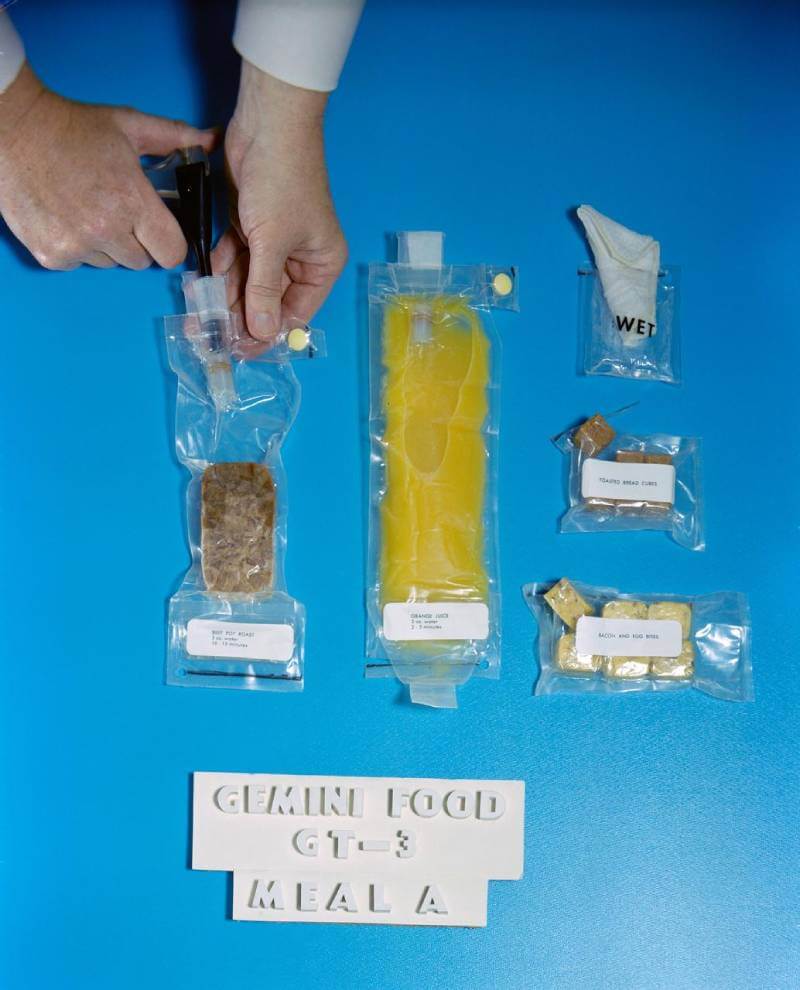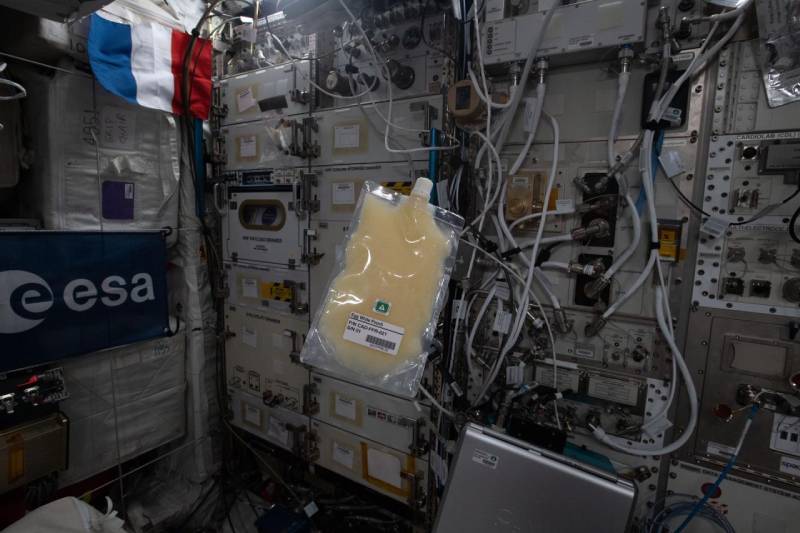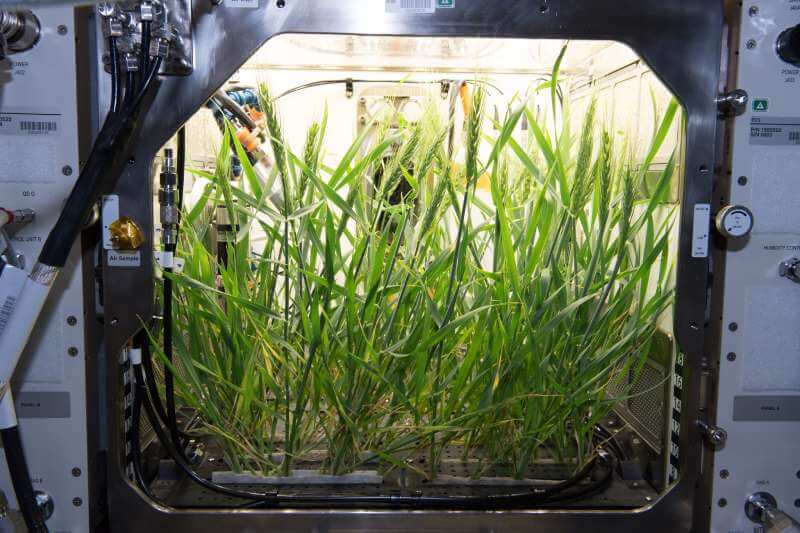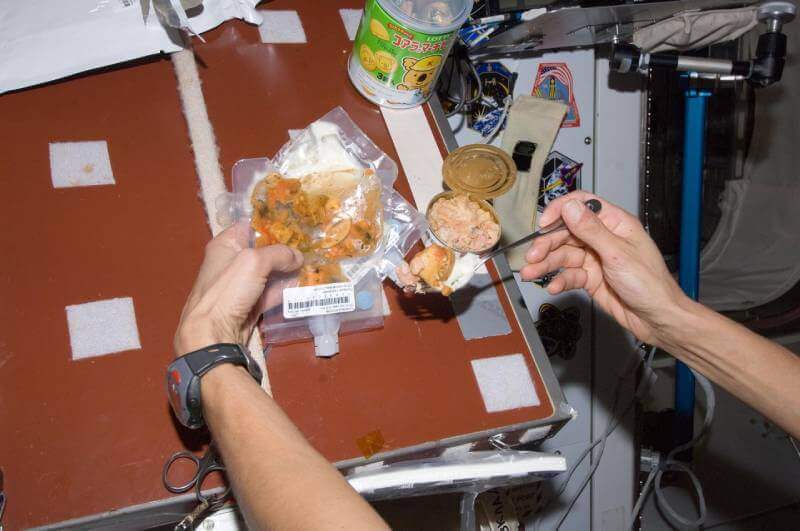Ever wonder what astronauts eat in space? With limited resources and unique challenges, creating a menu for space travelers is no easy task. In this article, we’ll explore the types of food astronauts eat, how they eat in microgravity, and how their meals are prepared.
We’ll also discuss what’s on the menu for breakfast and why freeze-drying is a popular method for preserving food in space.
The Space Dining Experience: A Unique Culinary Adventure
Astronauts rely heavily on pre-packaged meals, carefully designed to meet their nutritional needs while being lightweight, compact, and easy to prepare. These meals are essential for space missions, as they need to have a long shelf life and must be able to withstand the unique conditions of space travel.
Freeze-dried Food: A Tasty and Practical Solution
One of the most common types of astronaut food is freeze-dried. This process involves removing water from the food, allowing it to be preserved for extended periods without refrigeration. Freeze-dried food is ideal for space missions, as it is lightweight and easy to transport.

Once in space, astronauts can add water to the freeze-dried food to rehydrate it, making it ready to eat. Some examples of freeze-dried foods you might find on a space mission include fruits, scrambled eggs, and pasta.
Why Is Astronaut Food Freeze-Dried?
Freeze-drying is renowned for astronaut food because it offers several advantages. First, it removes the water content from food, making it lightweight and compact, which is crucial for space travel. Additionally, freeze-dried food has an extended shelf life, often lasting years without refrigeration. This is essential for long-duration missions, where resupply opportunities are limited.
The Importance of Nutrition and Variety in Space
While the idea of astronaut food might seem strange, it’s important to remember that these meals are designed to provide astronauts with the energy and nutrients they need to stay healthy in space. A balanced diet is essential, as astronauts must maintain their physical and mental well-being during missions.
To keep things interesting and prevent “menu fatigue,” space agencies work hard to offer various meal options for astronauts. This not only helps to maintain morale but also ensures that they receive a well-rounded diet. In addition, international cooperation in space programs means astronauts can enjoy various meals, from American favorites like hamburgers to Russian classics like borscht.
How Do Astronauts Eat in Space?
Microgravity poses several challenges when it comes to eating. For one, liquids must be contained in special pouches to prevent spills. Astronauts must be extra careful when opening these pouches, as even a small spill can create quite a mess in a weightless environment.

Solid foods can be eaten with a fork or spoon, but astronauts must be cautious about floating crumbs. These pesky particles could interfere with equipment or even be inhaled, creating potential hazards on the spacecraft.
Starting the Day Right: Space-Friendly Breakfast Options
You might be curious about what astronauts eat to start their day. They have a variety of breakfast options to choose from, including scrambled eggs, oatmeal, and breakfast bars. As for beverages, coffee and orange juice are available in powdered form and are rehydrated with water before consumption.
Mealtime in Space: Maintaining a Routine
Regarding meal schedules, astronauts on the International Space Station (ISS) follow a routine similar to what we’re used to on Earth. They typically enjoy three main meals and snacks throughout the day, adjusting meal times to accommodate the various time zones of the international crew members.
Astronauts often eat breakfast, lunch, and dinner together, as sharing meals helps maintain a sense of camaraderie and normalcy in their daily routine. After all, even in space, staying connected and enjoying some downtime with your crewmates is essential.
Preparing Food for Space Travel
Keeping astronauts healthy during their mission is paramount, so their food must provide all the necessary nutrients to support their physical and mental well-being. Therefore, food scientists work tirelessly to develop space meals that are both nutritious and delicious.
It’s not an easy task, as creating meals that can withstand the rigors of space travel while still being enjoyable to eat requires incredible innovation and creativity. However, the success of these efforts is evident in the wide variety of tasty and nourishing meals that astronauts have access to during their missions.
Space Food Packaging: Lightweight and Durable
Packaging plays a critical role in the astronaut’s dining experience. Space food packaging must be lightweight, compact, and durable enough to survive both launch and life in space. Most meals are vacuum-sealed in pouches or cans, which are easy to store and dispose of on the spacecraft.
The packaging also serves another essential function: preserving the taste and texture of the food. Food scientists can use vacuum-sealing and other preservation techniques to ensure that astronaut meals maintain their flavor and nutritional value throughout the mission.
Green Thumbs in Zero Gravity: Gardening on the ISS
Space gardens and greenhouses have been tested on the International Space Station (ISS), where astronauts have successfully grown vegetables like lettuce and radishes. These space-grown veggies supplement astronauts’ diets with essential nutrients and add some much-needed variety to their pre-packaged meals.

The ability to grow food in space has far-reaching implications for long-duration missions, like those to Mars, where resupplying fresh produce would be difficult or even impossible.
The Psychological Benefits of Space Gardening
Tending to a space garden offers more than just nutritional benefits for astronauts. There’s also a psychological aspect to consider, as caring for plants can be a relaxing and rewarding activity in the high-stress environment of space.
Connecting with nature, even on a small scale, can positively impact mental well-being. For example, astronauts often report that working with plants provides a sense of normalcy and helps to combat feelings of isolation and homesickness.
Space Food Innovations
Using 3D printers, astronauts could create various dishes from various food powders. This technology would allow them to craft meals that taste great and are precisely tailored to their individual nutritional needs. Imagine being able to print your favorite dish, perfectly adjusted to your dietary preferences and requirements!
The ability to print personalized meals would not only enhance the variety of food available to astronauts but also help maintain their health during long missions. With 3D-printed food, the possibilities are virtually endless!
The Future of Space Cuisine: Fresh and Tailored
As 3D-printed food technology advances, it could become a game-changer for space travel. By offering astronauts a diverse range of dishes and the opportunity to create meals tailored to their unique needs, 3D printing could revolutionize the way we approach nutrition and dining in space.
Moreover, this technology can reduce the amount of pre-packaged food that must be sent on space missions, ultimately cutting down on packaging waste and making resupply missions more efficient.
Final Thoughts
Astronauts face unique challenges when it comes to eating in space, but food scientists and engineers have developed innovative solutions to ensure they receive nutritious and enjoyable meals. From freeze-dried foods to space gardens, the future of space cuisine is continually evolving to meet the needs of these intrepid explorers. Hopefully, someday soon, we won’t have to ask the question, “What do astronauts eat in space?” anymore.

